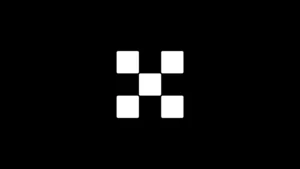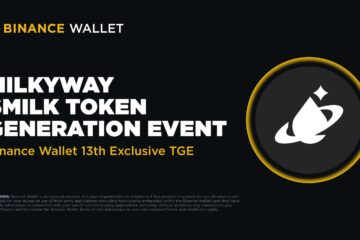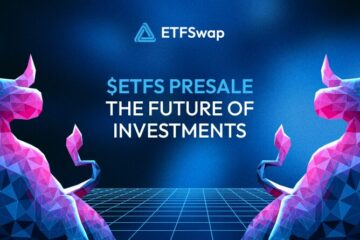Nillion is one of the most innovative cryptos that has emerged recently. It focuses tightly on privacy-enhancing technologies for secure computation and next-gen data confidentiality. Through a groundbreaking combination of multi-party computation, zero-knowledge proofs, and layers of advanced computation, the Nillion network enables private data sharing between multiple parties without exposing the data itself.
Unlike traditional blockchains, which store every transaction in a fully transparent ledger, Nillion employs blind modules and layered network components that shield sensitive information. This approach is a potentially revolutionary innovation in the healthcare, finance, and AI spaces, where secure data environments are commonly needed to validate transactions. Let’s dig in for a closer look.
What is Nillion?
Nillion is a decentralized data privacy and secure computation infrastructure. At its core, Nillion addresses the limitations of many traditional blockchains by crafting an environment where users can share or even process sensitive data without ever revealing it, even to the parties participating in the data processes.
Through multi-party computation (MPC) and advanced cryptography, the platform distributes work in such a way that even nodes operating the network and performing the computations never see the unencrypted, actual data.
With the preservation of privacy, Nillion is empowering developers to build dApps that can take the complex workload, from private semantic search to blind computations. Nillion’s overarching vision is to unlock new possibilities for AI models, data management, and cross-industry collaborations, all while safeguarding user information and fostering decentralized governance through its NIL token.
How Does Nillion Work?
Nillion’s architecture is centered around privacy-enhancing technologies (PETs) and a robust design that seamlessly combines data storage, secure computation, and network coordination.
Instead of raw sensitive data on-chain, Nillion uses a novel approach where encrypted or secret-shared data is processed through advanced cryptographic techniques, ensuring no single node sees the underlying information in its whole, unencrypted form.
The network itself relies on two main components, Petnet and nilChain, which each have a critical role to play in blind computation and decentralized network governance itself.


Source: Nillion Builder Docs
Petnet
Petnet is the main data and computation layer of Nillion. This is where builders can configure clusters of nodes to best handle various types of protected workflows. By leveraging MPC as well as homomorphic encryption, Petnet can guarantee that high-value data remains encrypted throughout the process.
Each node runs one or more Blind Modules, which discretely package PETs like MPC in a more developer-friendly way. These modules help power features like SecretVault, SecretDataAnalytics, and nilAI. Developers get to choose how to balance privacy and performance for their unique needs by choosing the right PET or module cluster.
nilChain
nilChain is the blockchain ledger for the Nillion network. It records the network activities and facilitates secure, decentralized transactions. While traditional blockchains store the public records of every transaction, nilChain operates on a privacy-first design. This means that it only logs the metadata for governance, node participation, and aggregate resource usage, instead of raw data. This makes the chain’s structure leaner and more able to support complex data operations securely.
nilVM
nilVM, or the Nillion Virtual Machine, is a purpose-built runtime environment where privacy-preserving computations take place. Developers can deploy custom logic or smart contract-like programs that leverage blind modules, zero-knowledge proofs, and cryptographic operations to facilitate secure data computation. Through simplification of program development and mitigating the complexities of secure computation via abstraction, nilVM gives builders the ability to create more robust, privacy-focused dApps in all sectors.


Source: Nillion Builder Docs
nilDB & nilAI
nilDB serves as a secure data repository utilizing nillion itself, allowing users to store encrypted data that can be referenced or processed on demand. nilAI extends these capabilities into machine learning, enabling private model training and inference on masked data. In combination, they power some of the most advanced use cases that range from the most sensitive data analytics to private sector predictive AI, all without compromising on confidentiality and trustlessness inside the Nillion network.


Source: Nillion Builder Docs
Use Cases of Nillion
- Secure Storage: Builders can use SecureVault to store information in an encrypted form or a secret shared form across Nillion network nodes. provides more robust data protection and helps support computations without revealing the actual underlying data.
- Data Analytics: With SecretDataAnalytics, developers can perform larger-scale queries or computations on encrypted information. lets them pull insights from high-value data without breaching confidentiality through MPC or homomorphic encryption.
- Signatures: Nillion Signatures leans on multi-party computation
- Retrieval-Augmented Generation (RAG): Through a combination of AI solutions and Nillion’s privacy technologies, countless organizations can now keep data encrypted at all times, even when using a large language model, or LLM.
The NIL Token
The key to how the Nillion network operates is in its native utility token, NIL. NIL helps facilitate the most important interactions of the network; it helps coordinate payments for network services while incentivizing nodes to contribute resources for assorted MPC protocols.
Core functionalities
Coordination Services
NIL is the primary medium on the Nillion network for paying network fees, which routes to the appropriate nodes. This framework makes sure that data flows as efficiently as possible to the right network modules without exposing sensitive data in the process.
Blind Computation
Blind computation allows users to distribute workloads efficiently for sensitive operations or processes. These operations are cryptography-heavy, so users compensate nodes by spending NIL tokens for their computing power.
Staking
Staking is one of the main ways to keep the Nillion network secure. By staking NIL tokens, node operators are incentivized to uphold reliable services. In return, stakers earn a portion of the transaction fees or other protocol-generated rewards.
Governance
NIL holders retain proportionate voting power in all decentralized governance matters. These votes can range from adjustments to resource allocation to new protocol upgrades. This community-driven element gives the Nillion network an incredible position for long-term viability and sustainability.
Token Supply & Distribution
Nillion’s NIL token has a total supply of one billion at genesis, with an initial circulating supply of just over 19.5%.
29% of tokens are reserved for fueling ecosystem growth and research, supporting developer grants, validator incentives, and strategic initiatives. Another 20% is slated for community-oriented programs, airdrops, and user incentives designed to expand adoption.
10% is allocated specifically to ongoing protocol development and research, ensuring the network evolves to meet security and performance benchmarks. Early backers, who contributed in Pre-seed, Seed, and 2024 fundraising rounds, receive 21% of NIL tokens.
Finally, 20% of the total supply is granted to core contributors, including advisors, developers, and others who have played a pivotal role in bootstrapping the network’s capabilities.


How to buy NIL
- First, you’ll need to choose a cryptocurrency exchange that supports NIL, like KuCoin or OKX, and create an account there.
- Next, be sure you’ve passed all the necessary verification or KYC steps that you need to begin trading.
- Once verified, your account will need to be funded. You can typically do this with either fiat currency via credit or debit cards or with another crypto, like BTC.
- Find the trading pair that matches your deposited funds, like NIL/BTC or NIL/USDT, and create an order. A market order buys at the current price, while a limit order waits for a specific price to fill.
- Once your trade has been filled, check your dashboard and withdraw your NIL to a more secure location than the exchange.


Nillion Ecosystem
The Nillion ecosystem is a decentralized data storage and secure computation framework built on Petnet and nilChain, and supplemented by an expanding community of builders, developers, and projects. This environment is custom-built to help organizations or individuals address the demands of high-value data in all spaces.


Key Sectors
- Healthcare: Secure data solutions allow encrypted patient records and private model inference.
- Financial Services: Blind computations enable risk assessments and analytics without exposing sensitive financial data.
- Enterprise Data Management: Enterprises can store confidential information and run private computations on distributed nodes.
- AI & Machine Learning: Private predictive AI benefits from advanced cryptography, preventing unauthorized data access.
Key Projects
- Private Model Training: Deployed within nilAI for LLMs and other AI frameworks.
- SecretDataAnalytics: Tools for NoSQL-style data queries that preserve confidentiality.
- Nillion Signatures: Distributed key management for secure transaction signing.
Nucleus Builders Program
The Nucleus Builders Program is a program created to provide grants and resources for early adopters and creators to help them develop new privacy-enhancing technologies and privacy-building applications. By committing to supporting both new and established developers, the Nillion network operates with a constant drive for collaboration and accelerated innovation.


Network Metrics
The Nillion network tracks an array of metrics like data throughput, node uptime, and blind module usage rates. With regular reporting on cluster reliability, transaction volumes, and data processing speeds, transparency is ensured, and further optimization is enabled. These metrics also help make better governance decisions.
Roadmap


- Upcoming phases will introduce additional privacy-preserving protocol upgrades, refining Nillion’s blind modules for more efficient homomorphic encryption and multi-party computation.
- As new clusters join the network, developers will have more granular control over the nodes they trust and the performance they require.
- Future versions of nilChain will improve consensus algorithms and integrate advanced governance features, ensuring smooth resource allocation across the entire Nillion Network.
- Nillion aims to foster collaboration with AI startups, healthcare organizations, and DeFi platforms seeking advanced data privacy solutions.
Nillion (NIL) on Binance Launchpool Details
On March 24, 2025, Nillion became tradable on Binance following a three-day Launchpool event that ran from March 21 to March 23.
During the Binance launchpool, users who staked BNB, FDUSD, or USDC were able to earn NIL tokens as part of a broader initiative to promote Nillion’s secure computation network.
The event allocated a total daily reward of 11.666 million NIL, split into three pools. The BNB pool received 28 million NIL in total (80%), while the FDUSD and USDC pools each received 3.5 million NIL (10%).
Users who participated in the launch were able to stake their choice of asset, subject to hourly caps to ensure fair distribution. As the event progressed, snapshots of user balances were taken to determine the share of NIL tokens that each user would be given.
Once farming was over, new NIL holders could then move their NIL tokens to their Spot Wallet to prepare for the token’s official listing for open trading.
The Future of Nillion
Nillion’s future depends on widespread adoption. However, the blind computer model is uniquely innovative and is positioned to spread to AI, healthcare, finance, and beyond. With a model that incentivizes innovation, collaboration, and creation, Nillion is solidly positioned to become a powerful, secure data processing platform.
 Bitcoin
Bitcoin  Ethereum
Ethereum  Tether
Tether  XRP
XRP  USDC
USDC  Lido Staked Ether
Lido Staked Ether  TRON
TRON  Dogecoin
Dogecoin  Cardano
Cardano  Figure Heloc
Figure Heloc  WhiteBIT Coin
WhiteBIT Coin  Wrapped stETH
Wrapped stETH  Bitcoin Cash
Bitcoin Cash  Wrapped Bitcoin
Wrapped Bitcoin  USDS
USDS  Chainlink
Chainlink  Wrapped eETH
Wrapped eETH  Binance Bridged USDT (BNB Smart Chain)
Binance Bridged USDT (BNB Smart Chain)  LEO Token
LEO Token  WETH
WETH  Hyperliquid
Hyperliquid  Monero
Monero  Stellar
Stellar  Zcash
Zcash  Coinbase Wrapped BTC
Coinbase Wrapped BTC  Ethena USDe
Ethena USDe  Litecoin
Litecoin  Sui
Sui  Avalanche
Avalanche  Hedera
Hedera  Shiba Inu
Shiba Inu  sUSDS
sUSDS  USDT0
USDT0  Dai
Dai  Mantle
Mantle  Toncoin
Toncoin  World Liberty Financial
World Liberty Financial  PayPal USD
PayPal USD  Cronos
Cronos  Ethena Staked USDe
Ethena Staked USDe  Uniswap
Uniswap  Polkadot
Polkadot  MemeCore
MemeCore  Aave
Aave  Bittensor
Bittensor  USD1
USD1  Canton
Canton  Rain
Rain 


